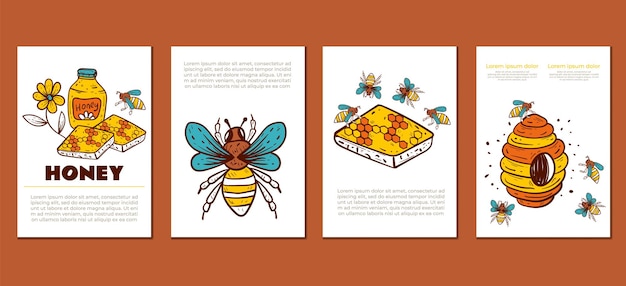Interesting Facts About Queen Bees

The queen bee is the matriarch of the hive, leading and making important decisions for the colony.
Queen bees live significantly longer than worker bees, with a lifespan of up to five years.
A queen bee can lay up to 2,000 eggs in a single day.
Queen bees emit pheromones that help regulate the behavior and development of the other bees in the hive.
The queen bee’s pheromones can attract male bees from afar during the mating season.
Queen bees are larger than worker bees and have a distinct elongated abdomen for egg-laying.
The queen bee’s diet consists mainly of royal jelly, a nutritious substance produced by worker bees.
Queen bees are highly pampered by the worker bees, who attend to all of their needs.
During swarming, a queen bee will leave the hive with a portion of the worker bees to create a new colony.
The queen bee has a stinger but rarely uses it, as her mission is to reproduce rather than defend the hive.
The lifespan of a queen bee largely depends on the health and productivity of her hive.
Queen bees have the ability to selectively fertilize an egg to become a female worker bee or a male drone bee.
In some bee species, if the queen bee dies or becomes unproductive, worker bees can transform a young larva into a new queen.
When a new queen bee emerges, she may need to fight off other potential queen bees to establish her dominance.
Despite her privilege, the queen bee cannot survive without the support and cooperation of the worker bees.
Interesting Facts About Queen Bees part 2
Queen bees have been revered and symbolized as powerful rulers in various cultures throughout history.
Beekeepers often mark their queen bees with a colored dot to easily identify her within the hive.
Queen bees are capable of producing a unique queen song that is distinct from the vibrations made by worker bees.
When a queen bee becomes weak or old, worker bees may start creating queen cups to raise a new queen.
Queen bees are crucial to the overall health and productivity of a beehive.
Queen bees are constantly attended to by worker bees who groom, feed, and carry out other tasks for her.
Queen bees mate with multiple drones during a mating flight to ensure genetic diversity within the colony.
The size and quality of the hive’s honeycomb cells determine if an egg will develop into a queen bee or a worker bee.
The queen bee’s pheromones can induce worker bees to begin constructing new cells for brood rearing.
Queen bees rarely leave the hive unless they are swarming or going on a mating flight.
Queen bees have a longer reproductive phase, during which they mate and lay eggs extensively.
A queen bee’s wings are generally shorter than those of worker bees, as she does not need to venture far from the hive.
The queen bee’s exceptional reproductive abilities are vital for the survival of the colony.
In some bee species, the queen bee has the ability to store sperm from a single mating flight for the duration of her life.
A queen bee can also control the development and behavior of her worker bees through her pheromones.
Queen bees have a higher metabolic rate than worker bees due to their continuous egg-laying activities.
The queen bee’s main purpose is to lay eggs and ensure the continuity of the colony’s population.
When a queen bee dies, the entire hive must work quickly to raise a new queen to avoid collapse.
The size and fertility of a queen bee are often indicators of a hive’s health and productivity.
Queen bees have a specially shaped reproductive organ called the spermatheca to store sperm.
It is common for a queen bee to inspect cells before laying eggs to ensure they are clean and properly prepared.
Queen bees possess a slightly curved stinger, which allows them to deliver venom without injuring themselves.
Queen bees are constantly surrounded by a retinue of worker bees, forming a protective circle known as the queen’s court.
Queen bees have an innate sense of timing and adjust their egg-laying patterns based on the availability of resources.
The strength and health of a queen bee directly influence the overall temperament of the beehive.
Queen bees use their pheromones to suppress the development of ovaries in worker bees, preventing them from becoming potential rivals.
During the winter months, queen bees will typically reduce or halt their egg-laying activities to conserve energy.
The unique genetics of a queen bee influence the traits and characteristics of her offspring.
Queen bees have a specialized retinue of bees known as attendants who take care of her grooming and feeding needs.
Queen bees exhibit remarkable resilience and adaptability to ensure the survival and success of their colonies.

